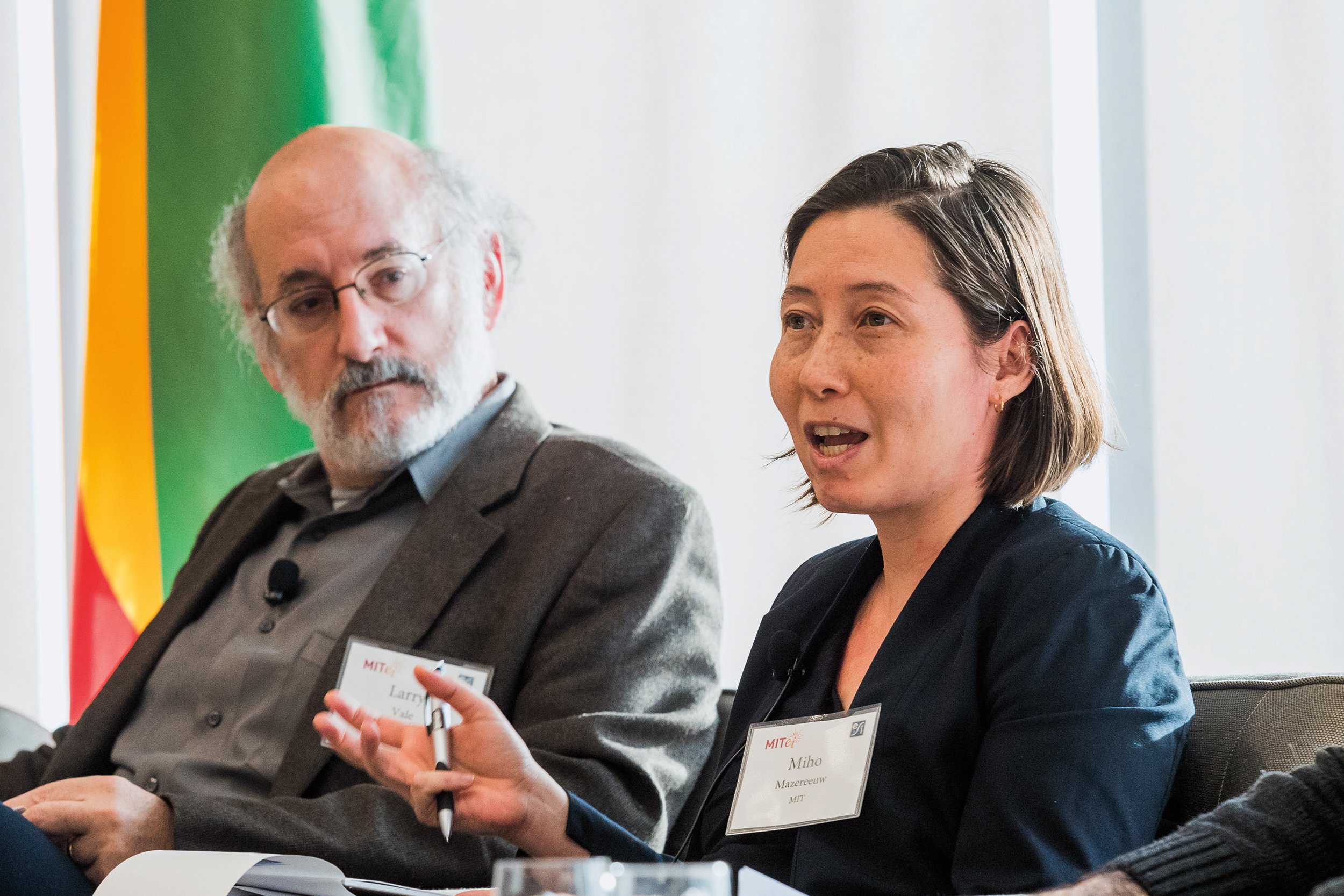January 10, 2018
Lawrence Vale Co-Chairs the “Human Settlements” Track of the MIT Conference on the Resilient Reconstruction of the Caribbean
RCHI director Lawrence Vale (left) and MIT Urban Risk Lab director Miho Mazereeuw (right) are both professors in the School of Architecture and Planning at MIT, and are applying their expertise in resilient housing and disaster response to the current situation in the Caribbean. (Photo Credit: Justin Knight)
Resilient Cities Housing Initiative director Lawrence Vale was invited to co-chair the “Human Settlements” Track of the MIT Conference on the Resilient Reconstruction of the Caribbean which took place at the MIT campus December 12-13, 2017. This opportunity enabled Vale to present on RCHI research and activities, and also contribute to the conference-wide dialogue on resilience and recovery after natural disasters.
The Massachusetts Institute of Technology made an institute-wide commitment to bring various types of expertise to the Caribbean in the face of natural disasters. This conference was the first event in a series of initiatives that seek to gather stakeholders, coordinate, collaborate and share their perspectives and proposed courses of action.
Below is an excerpt from the MIT Spectrum magazine that characterizes Vale’s contributions to the panel discussion:
“Part of the solution, for conference attendees and for future relief and reconstruction projects, will involve developing a new definition for resilience. Lawrence Vale SM ’88, who helped moderate a panel on human settlements at the December conference, argues that it is not sufficient to reinforce buildings and systems to withstand powerful natural disasters, or to rebuild houses—no matter how strong and sturdy—on the first piece of available land. If we really want to talk about resilient housing and cities, we first have to ask whether this new housing is safe from future risk, he explains. Will it be an asset for the people who are destined to live there?
For Vale, Ford Professor of Urban Design and Planning who also directs MIT’s Resilient Cities Housing Initiative, well-built housing on environmentally sound land is only one element in the creation of resilient housing. When we rebuild after a disaster, we need to ask ourselves what we are doing to help people connect to their neighbors, their communities, and their full lives, says Vale. After a disaster, the tendency is just to build quickly, and this often disrupts the networks that people depend on to lead viable lives. It’s a case of getting the house right and the job wrong.
Vale cites the examples of post-tsunami Indonesia, and that of northern Colombia, where violent landslides displaced thousands of neighborhood residents. “In both cases, the people who came to rebuild saw the survivors as victims, as desperate people they were rescuing with this new housing.
What they didn’t see was that these so-called victims often owned their own land, that they grew food, that they had jobs and families nearby— that they were able to live a complete life, despite low incomes. After reconstruction, they may have had houses that looked better in photographs. But the houses were nowhere near their jobs or affordable transportation.”
Interested in learning more? Read the MIT Spectrum article with in-depth coverage of the conference and Vale’s contributions: https://spectrum.mit.edu/spring-2018/redefining-resilience/



